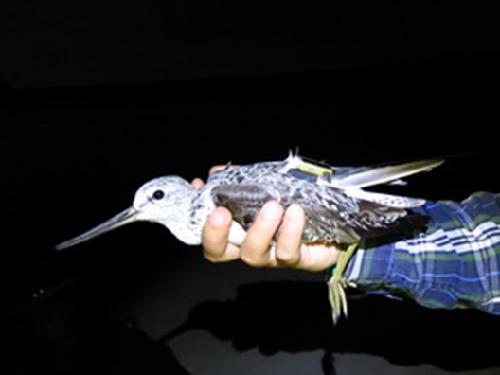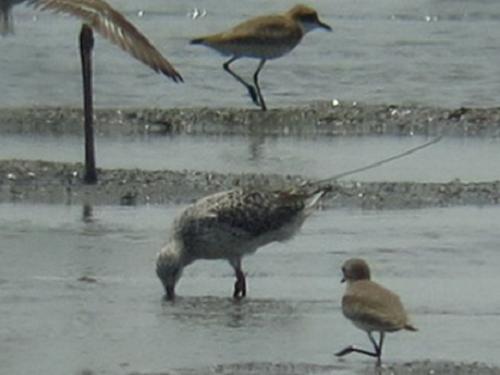Yu Chenxing
This project aims to clarify Spotted Greenshank overwintering habitat selection and local as well as migratory movement patterns.

Spotted Greenshank is the species of Endangered and emblematic shorebirds in the East Asian-Australasian Flyway. Its passage and wintering habitat are highly threatened by coastal wetland development. Despite this, the species is also worth to concern because it has not been focused on research, and hardly shown in the scientific literature. This project will fill a critical research gap because currently we have only little understanding of Spotted Greenshank wintering ecology.

This project will focus mainly in Thailand, a country where is believed to maintain 7-10% of the global Spotted Greenshank population. Beyond Thailand, using satellite tracking, we also can clarify its migratory routes, which uses the East Asian-Australasian Flyway including Russia, South Korea, Mainland China, Myanmar, Bangladesh, Indonesia and Malaysia and some other potential countries which make-up the full distribution range of Spotted Greenshank. The birds will be monitored in their winter habitat and then tracked to their stopover sites, breeding grounds and back again. In addition, we will update the migratory statements through internet, whilst local researchers or collaborators throughout the flyway could target and study flocks locally during passage as each bird will be colour ringed as well. This should maximize the information from a small number of satellite collars. Besides the migratory movement patterns, we will also analyze the habitat selection using both tracking data and ground surveys.
The collected information about the winter and stopover habitat requirements of Spotted Greenshank will provide greater understanding of its migration and wintering ecology focusing on habitat use and site characteristics, which will be particularly useful for prioritizing sites for management and conservation. It will be fascinating to follow the migratory paths on its migration. Furthermore, we expect this will lead to the development of a global conservation strategy for this species, and will generate vital information for the future Species Action Plan.